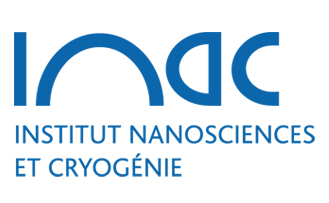A uranium-based UO$_2$$^+$ -Mn$^{2+}$ single-chain magnet assembled trough cation-cation interactions
Résumé
Single-chain magnets (SCMs) are materials composed of magnetically isolated one-dimensional (1D) units exhibiting slow relaxation of magnetization. The occurrence of SCM behavior requires the fulfillment of stringent conditions for exchange and anisotropy interactions. Herein, we report the synthesis, the structure, and the magnetic characterization of the first actinide-containing SCM. The 5 f–3d heterometallic 1D chains [{[UO$_2$(salen)(py)][M(py)$_4$](NO$_3$)}]$_n$, (M = Cd (1) and M = Mn (2); py = pyridine) are assembled trough cation–cation interaction from the reaction of the uranyl(V) complex [UO$_2$(salen)py][Cp*$_2$Co] (Cp* = pentamethylcyclopentadienyl) with Cd(NO$_3$)$_2$ or Mn(NO$_3$)$_2$ in pyridine. The infinite UMn chain displays a high relaxation barrier of 134 $\pm$ 0.8 K (93 $\pm$ 0.5 cm$^{-1}$ ), probably as a result of strong intra-chain magnetic interactions combined with the high Ising anisotropy of the uranyl(V) dioxo group. It also exhibits an open magnetic hysteresis loop at T< 6 K, with an impressive coercive field of 3.4 T at 2 K.
Domaines
Chimie| Origine | Fichiers éditeurs autorisés sur une archive ouverte |
|---|

